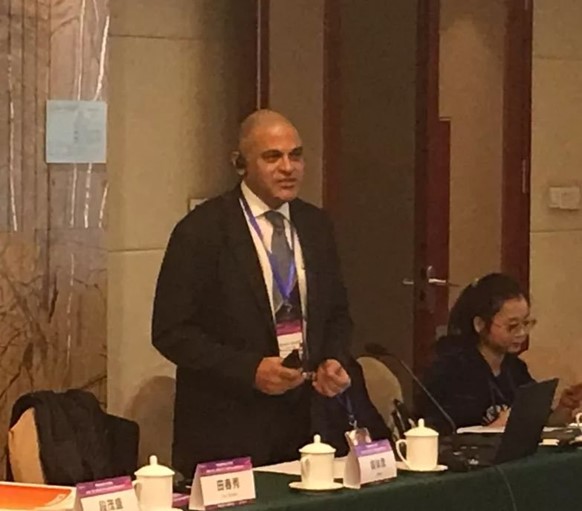
Amit GARG
Professor of Indian Institute of Management
Many pollutants and greenhouse gases have the same source. In other words, the same emission source may emit both greenhouse gases and air pollutants. Market mechanisms can effectively deal with this problem. From the perspective of coordinated control of air pollutants and greenhouse gas emissions reduction From a different perspective, through the interaction of policies and economic measures targeting different pollutants in different regions, market integration and separation can be realized. Market intervention mechanisms, policy measures, and policy implementation effects will all lead to market integration or separation. For example, Air pollution is cross-border, and the governments of several countries can take joint policies and measures at the same time, such as clean air, clean skies, etc. It is estimated that if the global carbon trading-related markets and actions (plans) can be linked, the synergy will make The cost per ton has dropped by 4-5 US dollars.
Existing global emission rights markets include:
1. Carbon market ("total control + trading"), such as the European carbon trading market, China's carbon trading market, etc.;
2. Sulfur dioxide trading market, such as the US sulfur dioxide trading market;
3. Nitrogen oxide trading market;
4. The trading market for particulate matter, mainly through cross-border air pollution control;
5. HFC, methane and black carbon trading markets;
6. Ozone and POP (Persistent Organic Pollutants) trading markets on the surface.
7. Measures for other emission reduction purposes, such as congestion charges, low emission zones, etc.
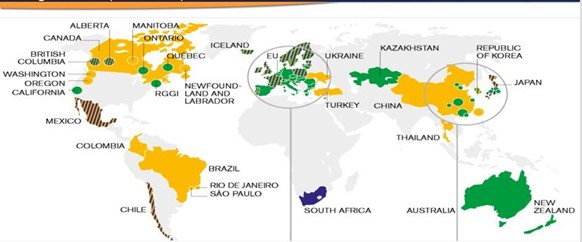
Global Carbon Market Distribution (World Bank, 2016)
Professor Garg divided a four-quadrant analysis model by region and emission type to illustrate how separate and combined markets work.
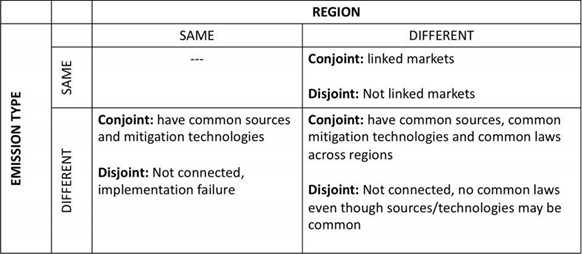
The first quadrant represents the same region, the same gas, there is no connection between the two. There may be a joint market in the second quadrant. For example, China currently has 7 carbon trading pilot projects. We need to link these 7 pilot projects together so as to form a joint market. The third quadrant, such as carbon and sulfur have the same source, and similar emission reduction technologies. If they can be united, it will help improve efficiency; if the market is fragmented, it will inevitably lead to the failure of policy implementation. The fourth quadrant is the most complicated type. For example, take the EU cross-border air pollution control as an example. Although there are conditions to build a joint market, due to the lack of relevant legal framework, the market cannot be connected, and the synergistic effect is also very difficult to generate.
There are also differences in the cost of synergies. For example, to reduce carbon dioxide emissions from power plants, the cost of energy transformation from coal to gas and solar energy is very high. But if it is only to control local pollution, such as electrostatic adsorption of particulate matter, the cost is only 20% of the energy transformation. On the other hand, it is also difficult to determine who bears the cost of energy transformation, especially in developing countries, where local governments are responsible for controlling air pollution, but the greenhouse effect is not on the list of responsibilities of local governments. This needs to be considered in future policy design.。
The Chinese government's three-year action plan to win the blue sky defense war proposes a coordinated reduction of greenhouse gas emissions, and proposes a comprehensive solution for the Beijing-Tianjin-Hebei 2+26 cities. The permit system for controlling pollutant discharge has comprehensively controlled air, water and soil pollution, and has been piloted in 11 provinces since 2007. Professor Garg thinks this is a very effective policy system.
Estimation of greenhouse gases based on the AIM model
Short-lived climate pollutants and air pollutants
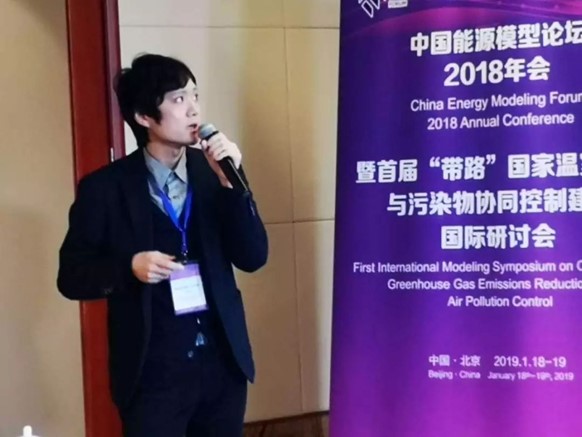
HIRAYAMA Tomoki
Japan Mizuho Institute of Information
The main activities of the AIM Modeling Project
The AIM project is an international network tool platform. The entire network includes China, Thailand, Malaysia, India, Bangladesh and other Asian countries, and it conducts joint analysis work on low-carbon society, capacity building, and modeling development. The main purpose is to help Asian countries establish comprehensive assessment models, formulate medium- and long-term low-emission goals and paths, and ultimately achieve the goals of 2°C and 1.5°C global warming through collaborative tools for comprehensive scientific analysis and decision-making processes.
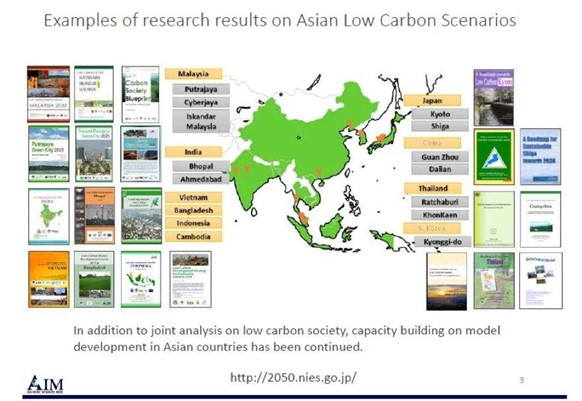
Japan's role in greenhouse gases and air pollutants
Specific actions and work on collaborative control
Japan is currently using the AIM model to quantify emissions of greenhouse gases, short-lived climate pollutants (SLCPs) and air pollutants under different policy scenarios; measures taken to address global warming, benefits and associated costs of SLCP responses; Tools used by stakeholders were developed.
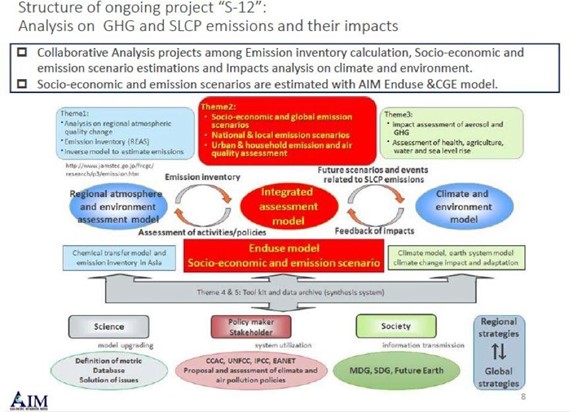
Future work plan
1. Under different policy scenarios, continuously quantify the effects of various emission reduction measures, and estimate the emissions of greenhouse gases, short-lived climate pollutants (SLCPs) and air pollutants.
2. Evaluated the measures taken to address global warming, the benefits and associated costs of SLCP responses;
3. Developed tools for use by stakeholders;
4. In order to achieve emission reduction goals, continue to build a global network, strengthen international cooperation, and expand technological, economic and social transformation.









